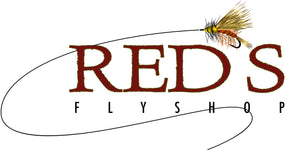CALL NOW (509) 933-2300
CALL NOW (509) 933-2300

Hopper fly fishing is an exhilarating way to target trout, especially during the late summer months when these insects are abundant along riverbanks. The sight of a big trout attacking a hopper pattern is unforgettable. To improve your chances of success, follow these three essential tips.
One of the key aspects of hopper fishing is to mimic the natural behavior of grasshoppers. When hoppers fall into the water, they create a noticeable plop. To imitate this, cast your fly with enough force to make a slight splash upon hitting the water. This plop signals to the trout that a juicy meal has just landed. Aim for accuracy, targeting spots where hoppers are likely to fall, such as overhanging vegetation or grassy banks.
Hoppers naturally find themselves close to the edges of rivers, where they often end up in the water. To mimic this, ensure your drift runs tight against the bank. Cast parallel to the shoreline, allowing your fly to land on the edge. Trout often lurk in these undercut banks, waiting for an easy meal. A precise cast and drift can be the difference between a fishless day and a memorable catch.
After allowing your hopper to drift naturally for a few feet, add some movement to entice a strike. Once your fly has floated along the bank for 3-5 feet, give it a quick skitter upstream. This maneuver slows down the fly and creates an erratic motion, mimicking a struggling hopper. The sudden movement can trigger an aggressive response from a nearby trout, giving them a chance to pounce on your fly.
Successful hopper fishing relies on presentation, precision, and movement. By presenting your hopper with a noticeable plop, drifting it right against the bank, and skittering it upstream, you'll create an irresistible imitation of a natural grasshopper. Practice these techniques, and you'll be well on your way to landing more trout on your next fishing trip. Remember to stay patient and observant, adjusting your approach based on the trout's behavior and river conditions. Happy fishing!
We teach these techniques and more through our casting courses in our University of Fly Fishing.
All of our Tributaries are open! These are the greens and the blues of the fishing slopes. Check available dates out HERE.
Our University of Fly Fishing is the most unique, comprehensive fly fishing education available.
With summertime flows currently happening on the Yakima, we have been concentrating on our tributaries as the classroom for most of our classes. Euro, Trout Spey and all walk and wade Fishalongs can happen up on one of our Tributaries.
